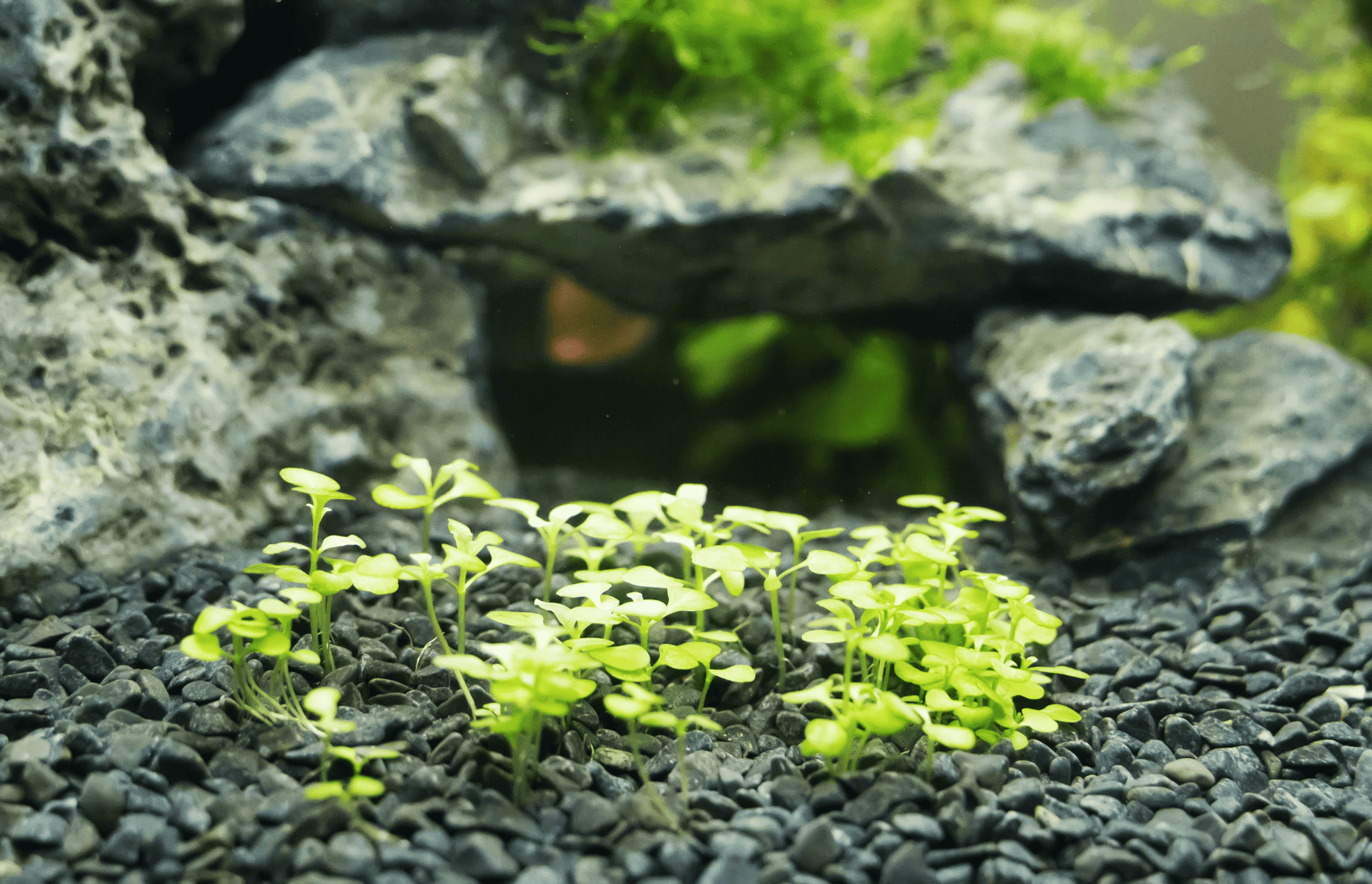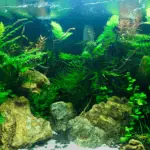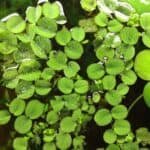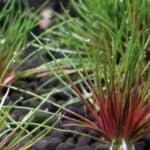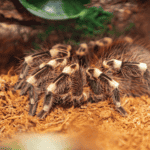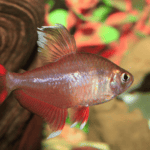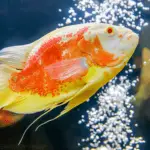The Dwarf Baby Tear, known scientifically as Hemianthus callitrichoides, is a vibrant aquarium plant cherished for its minuscule leaves and striking bright green hues. This plant, originating from East Havana in Cuba, is increasingly becoming a favorite among aquarium enthusiasts. Its unique ability to carpet aquarium substrates and create a dense, green landscape renders it an invaluable addition to any aquascape.
Dwarf Baby Tears: A Brief Introduction
Recognized as one of the world’s smallest and most popular aquarium plants, Dwarf Baby Tears grows up to 3 cm long and spreads up to 10 cm horizontally. Its leaves, merely a millimeter in size, make it an ideal plant for nano aquariums. This plant is also known by other names such as cuba, Hemianthus Cuba, pearl grass, or HC.
Characteristics and Requirements
The Dwarf Baby Tear is a moderate to slow-growing plant that demands a specific set of conditions to flourish. It thrives under high light and CO2 conditions and prefers water with a pH ranging from 5.0 to 7.5, hardness of 4-5 dGH, and temperature between 68-82°F.
Key Features and Requirements:
- Maximum stem length: 3 cm
- Individual stem width: 0.5 cm
- Water PH: 5.0-7.5
- Water Hardness: 4-5 dGH
- Water Temperature: 68-82°F
- Lighting: High
- Growth: Medium
Under suitable conditions, this plant produces oxygen bubbles, known as pearling, creating an attractive feature when the lights reflect off the bubbles. Its dense carpet also provides an ideal environment for spawning fish to lay their eggs, making it a preferred choice for shrimp tanks.
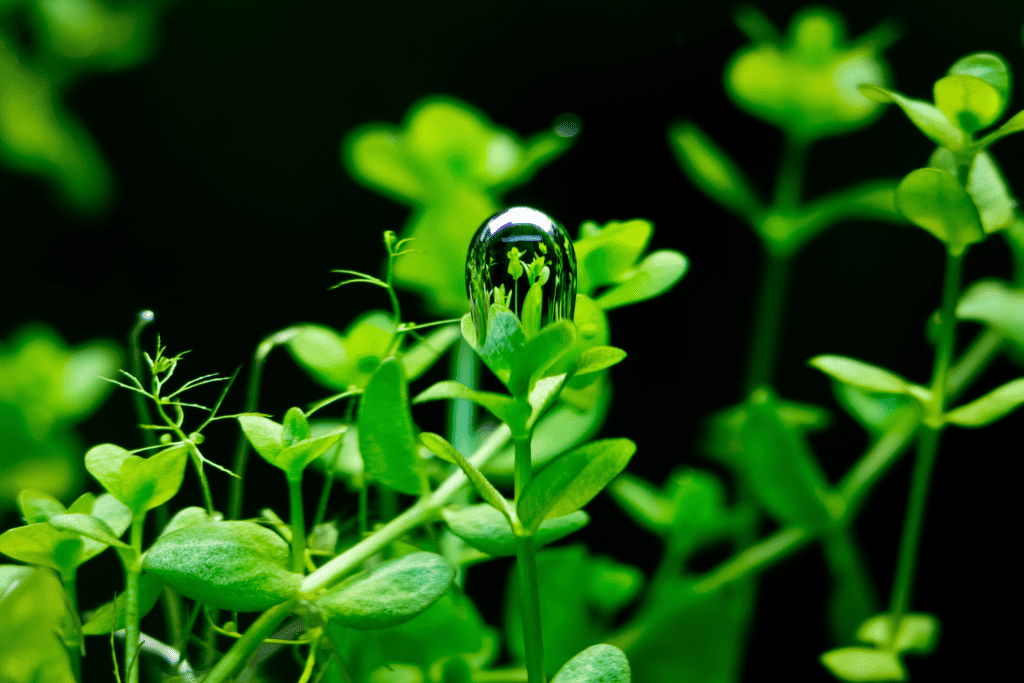
The Origin Story
The plant was first discovered by Holger Windeløv, founder of Tropica, in 2003 in Las Pozas, Cuba, about 90 kilometers east of Havana. The moniker ‘Cuba’ originates from its homeland. The plant’s popularity has soared over the years, with improvements in aquarium hardware and fertilizers making it easier to grow and maintain.
Cultivation and Care
The plant requires abundant lighting and a fine-grained substrate for optimal growth. For lighting, the tank should have at least 2 watts of fluorescent bulbs per gallon, with the light consistently on for 10-14 hours a day. A layer of aqua soil powder at the tank bottom helps hold the delicate shallow roots down better.
To prevent the accumulation of excess nutrients and waste products, it’s advisable to change 10-25% of the aquarium water every other week. Good water circulation is also crucial for the plant’s healthy growth.
Propagation
Dwarf Baby Tears propagate easily under proper conditions. Aqua soil powder is the ideal substrate for this process, allowing roots to grow more quickly and easily. This plant propagates via new shoots or runners that branch off from the root area.
To speed up propagation, pieces can be cut from a mature plant and placed in other areas of the aquarium. When planted in small clumps a few centimeters apart, it can spread rapidly and carpet the bottom. The plant can also reproduce sexually through seed production under favorable conditions.
Benefits of Dwarf Baby Tears in Aquariums
The Dwarf Baby Tear isn’t just visually pleasing; it also contributes significantly to the overall health of the aquarium ecosystem. The plant helps reduce algae growth and improve water clarity, which in turn promotes the well-being of the aquatic inhabitants. The lush carpet it forms also provides a safe haven for fish to lay their eggs, and the tiny crevices amidst the foliage make ideal hiding places for smaller aquatic creatures.
Its dense growth also aids in oxygenating the water, creating a healthier environment for fish and other aquatic life. Notably, when the plant is under optimal conditions, it produces oxygen bubbles – a phenomenon known as ‘pearling’ – that add an enchanting aesthetic touch to the aquarium.
Aesthetics and Aquascaping with Dwarf Baby Tears
In the world of aquascaping, the Dwarf Baby Tear holds a special place due to its unique aesthetics. The bright green, carpet-like growth it forms is a sight to behold, transforming the aquarium into an enchanting underwater landscape.
The plant is perfect for filling in tight spaces in your aquascape, and can also be used creatively to fill in crevices between rocks or driftwood, simulating a natural aquatic environment. When used in combination with other plants and aquascaping elements, Dwarf Baby Tears can help create a dynamic, multi-layered, and visually striking aquarium setup.
Challenges in Growing Dwarf Baby Tears
Growing Dwarf Baby Tears comes with its set of challenges, which primarily revolve around its high light and CO2 requirements. The plant requires consistent and strong lighting to grow well, and insufficient light can hinder its growth and spread.
In addition to lighting, the plant also demands a stable supply of CO2. Without adequate CO2, the plant struggles to grow and may not achieve the dense, carpet-like appearance that is so desired.
Lastly, this plant’s fine, delicate roots require a fine-grained substrate to anchor properly. In the absence of a suitable substrate, the plant may have difficulty establishing and could get dislodged easily.
Dwarf Baby Tears vs. Other Aquarium Carpeting Plants
The Dwarf Baby Tear is often compared to other carpeting plants like Java Moss, Marsilea Minuta, and Glossostigma Elatinoides. While each plant has its unique characteristics and requirements, Dwarf Baby Tears is often favored for its vibrant color and smaller leaf size, which can make aquariums appear larger and more intricate.
However, compared to some other carpeting plants, the Dwarf Baby Tears has higher light and CO2 requirements. It is also a slower grower, meaning it takes longer to establish a carpet. Despite these challenges, many aquarists find the stunning visual impact of a Dwarf Baby Tears carpet worth the extra effort.
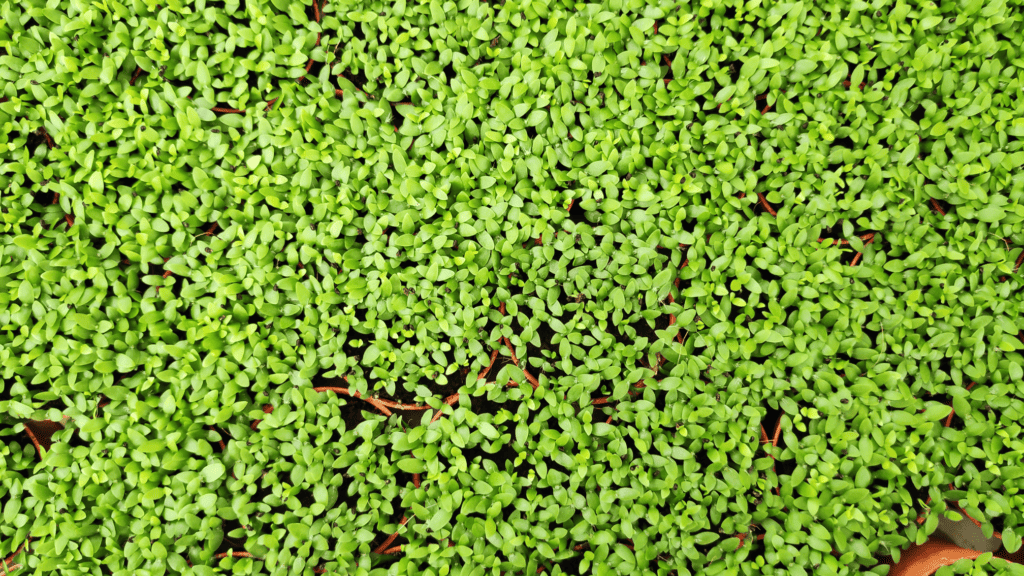
Conclusion
In conclusion, the Dwarf Baby Tears plant, with its tiny leaves and bright green coloration, is an excellent choice for aquascaping enthusiasts. Not only does it provide an aesthetically pleasing carpet over the aquarium substrate, but it also offers an ideal environment for spawning fish and shrimps. With the right care, this plant can transform an ordinary aquarium into a thriving, vibrant underwater landscape.
Frequently Asked Questions about Dwarf Baby Tears
1. What is the Dwarf Baby Tear plant?
The Dwarf Baby Tear is a popular carpeting plant used in aquariums. It’s known for its small leaves and bright green color. Scientifically, it’s called Hemianthus callitrichoides.
2. Where does Dwarf Baby Tears originate from?
Dwarf Baby Tears originate from East Havana, Cuba.
3. What are the ideal conditions for growing Dwarf Baby Tears?
Dwarf Baby Tears prefers high light and CO2 conditions. The ideal water parameters include a pH of 5.0-7.5, hardness of 4-5 dGH, and temperature between 68-82°F.
4. How does Dwarf Baby Tears propagate?
Dwarf Baby Tears propagate via new shoots or runners that branch off from the root area. Cuttings from a mature plant can also be planted in other areas of the aquarium to promote faster propagation.
5. What are the benefits of Dwarf Baby Tears in an aquarium?
Dwarf Baby Tears help reduce algae growth, improve water clarity, and provide an ideal environment for spawning fish to lay their eggs. It also adds aesthetic appeal to the aquarium with its carpet-like growth.
6. What are the challenges in growing Dwarf Baby Tears?
The plant requires consistent high lighting and a stable supply of CO2, which can be challenging to maintain. Its delicate roots also require a fine-grained substrate to anchor properly.
7. How does Dwarf Baby Tears compare to other carpeting plants?
Dwarf Baby Tears are favored for its vibrant color and smaller leaf size. However, they has higher light and CO2 requirements compared to some other carpeting plants and are slower growers.
8. How do I care for Dwarf Baby Tears?
To care for Dwarf Baby Tears, ensure it has adequate lighting, a suitable substrate, and a stable supply of CO2. Regular water changes (10-25% every other week) and good water circulation are also important for the plant’s health.
9. Can Dwarf Baby Tears be used in shrimp tanks?
Yes, Dwarf Baby Tears are ideal for shrimp tanks. The dense carpet it forms provides a safe haven for the shrimps.
10. Can Dwarf Baby Tears grow out of water?
Yes, Dwarf Baby Tears can grow out of water, a method known as “emersed” growth. This is often how it is grown commercially. However, transitioning from emersed to submerged growth (underwater in an aquarium) can sometimes be challenging for the plant.
